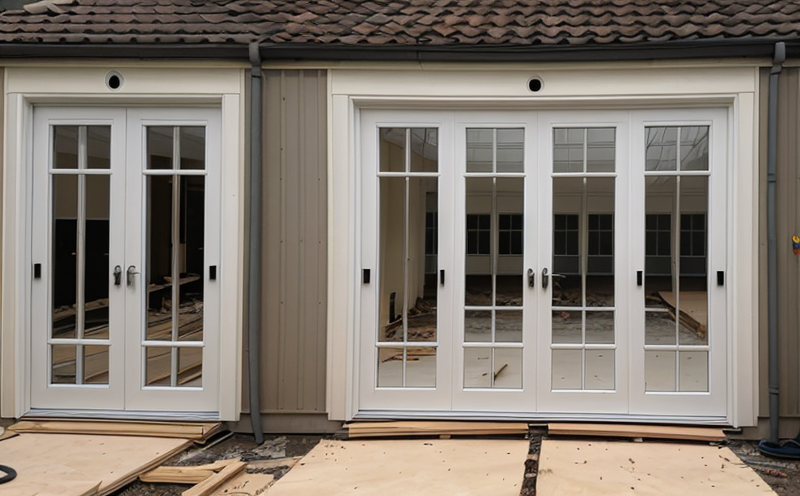Fire Endurance Testing of Veneered Doors
The fire endurance testing of veneered doors is a critical component in ensuring public safety and compliance with international standards. This service ensures that the doors can withstand the intense heat, flames, and smoke associated with fires without compromising structural integrity or releasing toxic materials into the environment. The process involves subjecting the door to controlled exposure to fire under specific conditions outlined by relevant standards such as ISO 14693-2, ASTM E108, and EN 1363.
The testing protocol typically begins with detailed preparation of the specimen. This includes ensuring the veneer is securely attached to the door core, which could be made from various materials like wood, metal, or composite. The door must then undergo thorough cleaning and conditioning before being placed in a furnace where it will be subjected to temperatures ranging between 800°C to 1200°C depending on the intended use of the door.
The duration of exposure can vary significantly based on the specific application; for instance, doors used in high-risk areas may need to withstand longer durations than those in lower risk zones. During the test, various parameters are continuously monitored including temperature rise within the room containing the specimen, heat flux through the door, and any smoke or gas emissions.
At regular intervals throughout the test, observations are made regarding the structural stability of the door, its resistance to penetration by flames, and the integrity of the sealing around the edges. Compliance with standards requires not only that these criteria be met but also stringent limits on toxic gas release according to applicable regulations such as ISO 13501.
| Application | Details |
|---|---|
| Data Centers | Veneered doors in data centers must meet stringent fire resistance requirements to protect against potential hazards from fires. |
| Healthcare Facilities | In healthcare settings, fire resistance is crucial to safeguard patients and staff during emergencies. |
| Commercial Buildings | Veneered doors in commercial buildings are tested for their ability to maintain structural integrity under fire conditions. |
Benefits
- Ensures compliance with international standards and regulations.
- Promotes safer environments by verifying the fire resistance of veneered doors used in critical areas.
- Aids in reducing insurance premiums through demonstrated safety measures.
- Safeguards against liability issues due to non-compliant products or installations.
Industry Applications
- Data Centers: Veneered doors in data centers must meet stringent fire resistance requirements to protect against potential hazards from fires.
- Healthcare Facilities: In healthcare settings, fire resistance is crucial to safeguard patients and staff during emergencies.
- Commercial Buildings: Veneered doors in commercial buildings are tested for their ability to maintain structural integrity under fire conditions.
Quality and Reliability Assurance
- Detailed Pre-test Preparation: Specimen preparation involves ensuring the veneer is securely attached to the door core and undergoing cleaning and conditioning before testing.
- Instrumentation and Monitoring: Continuous monitoring of various parameters such as temperature rise, heat flux, and smoke/gas emissions during the test.
The process also involves rigorous quality checks at every stage from sample preparation to final reporting. Compliance with standards requires not only meeting specific criteria but also stringent limits on toxic gas release according to applicable regulations such as ISO 13501. Rigorous adherence to these protocols ensures reliable and repeatable results, which are essential for maintaining high-quality standards.





